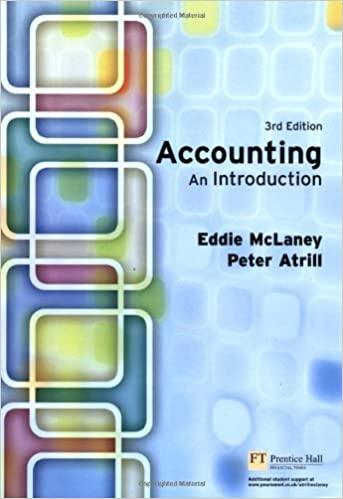I cannot seem to get 17.14 to be correct. Please help. Thank you.



14 A1 fx B D E F H K M 7 Mr. Smith, a consultant, has indicated that the Weighted Average method is appropriate our needs. He is concerned 8 about the number of units that failed inspection and the pricing of the good units completed. 12 13 General Information 15 The I See The Light Company has a related company that produces the figurines. They use process costing 16 in the molding department. The factory overhead is applied at a rate of 50% of direct labor dollars. 20 The material is added at the beginning of the process. The labor and overhead costs are assumed 21 to be added uniformly throughout. The industrial engineers have studied our system and have determined 22 that the acceptable loss for every hundred units that pass the inspection point is 5 units. 23 24 28 29 30 Month of January 31 32 Selected information for January is presented below. Note that the applied overhead rate was 36 50% of direct labor costs in the molding department 37 38 39 Molding Department 40 44 Goods in-process as of January 1 were 3,000 figurines at a cost of $8,400.00. Of this amount, $1,560.00 was from 45 raw materials added, 54,560.00 for labor and $2,280.00 for overhead. These 3,000 figurines were assumed to be 46 80.00% complete as to labor and overhead. 47 48 During January, 21,500 units were started, $10,750.00 of materials and $36,670.00 of labor costs were incurred. 52 53 The 4,000 figurines that were in-process at the end of January were assumed to be 30.00% complete to 54 labor and overhead. 55 56 While normal spoilage is 5% of the good units completed, 1,640 units failed inspection in January. The units are inspected at the end of the process. 60 61 62 1 2 3 4 5 6 7 8 9 10 11 12 13 14 15 16 17 18 19 F G H January 3000 21500 24500 18,860 units (17.01) 943 units (17.02) 697 units (17.03) 4,000 units (17.04) 24,500 units (17.05) B D E 9 14 Physical Flow of Units 15 16 Work-in-Process - Beginning 17 Units Started this Period 18 Units to Account for 23 24 Total transferred out 25 Normal spoilage (Roundup to the next unit if needed) 26 Abnormal spoilage 27 Work-in-Process - Ending 32 Total Accounted for 33 34 35 36 41 Equivalent Units Material (Round to three places, ##.###.###) 42 43 20,500 units 1200 44 45 Equivalent Units Conversion (Round to three places, ##.###.###) 50 51 52 53 54 Total cost of Material (Round to two places, ##.###.##) 59 60 1.5 61 62 63 Total cost of Conversion (Round to two places, ##.###.##) 68 Total cost to account for (Round to two places, ##.###.##) 69 1 2 3 4 5 6 7 8 9 10 11 12 24,500.000 (17.06) 21,700.000 (17.07) 1560 10750 $ 12,310.00 (17.08) 36670 4560 2280 55005 4560 2280 61,845.00 (17.09) 74,155.00 (1710) $ $ 13 14 15 16 17 18 19 20 21 | 22 | 2.... B69 X G H 2280 61,845.00 (17.09) 74,155.00 (17.10) 0.5024490 (1711) 2.8500000 (1712) 2,009.80 3,420.0000000 B D E F 62 2280 63 Total cost of Conversion (Round to two places, ##.###.##) $ 68 Total cost to account for (Round to two places, ##.###.##) $ 69 70 24,500.000 71 $ 12,310.00 72 Cost per equivalent unit of Material (Round to seven places, ### 2 $ 77 21,700 units 78 $ 61,845.00 79 Cost per equivalent unit of Conversion (Round to seven places, #*##*****) $ 80 81 4000 $ 0.5024490$ 86 1200 $ 2.8500000 $ 87 88 89 90 Cost of the ending inventory, material and convesion (Round to two places, $######## $ 91 92 20,500.000 $ 0.5024490 93 20,500.000 $ 2.8500000 94 943 units $ 0.5024490 $ 2.8500000 $ 3,161.36 $ 95 Cost of the units transferred, material and convesion (Round to two places, $######## $ 96 97 98 697 units $ 0.5024490$ 99 697 units $ 2.8500000 $ 100 Cost of the abnormal spoilage (Round to two places, $#**#*#.##) $ 101 102 103 104 105 106 1 2 3 4 5 6 7 8 9 10 11 12 13 14 15 5,429.80 17.13) 10300.2045 58425 3,161.36 68,725.20 (17.14) 350.21 1.986.45 2,336.66 17.15) .. 16 17 18 19 20 21 22









